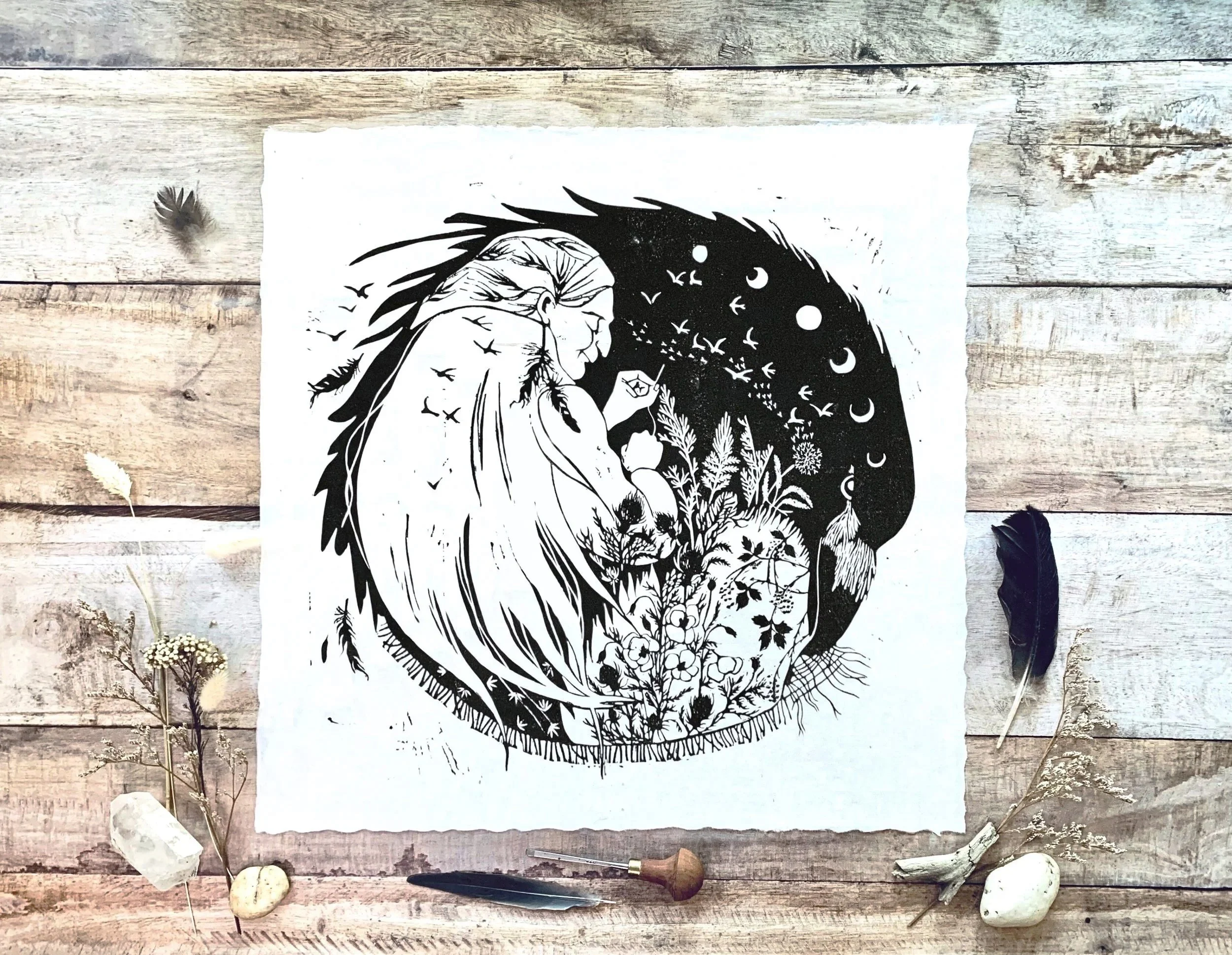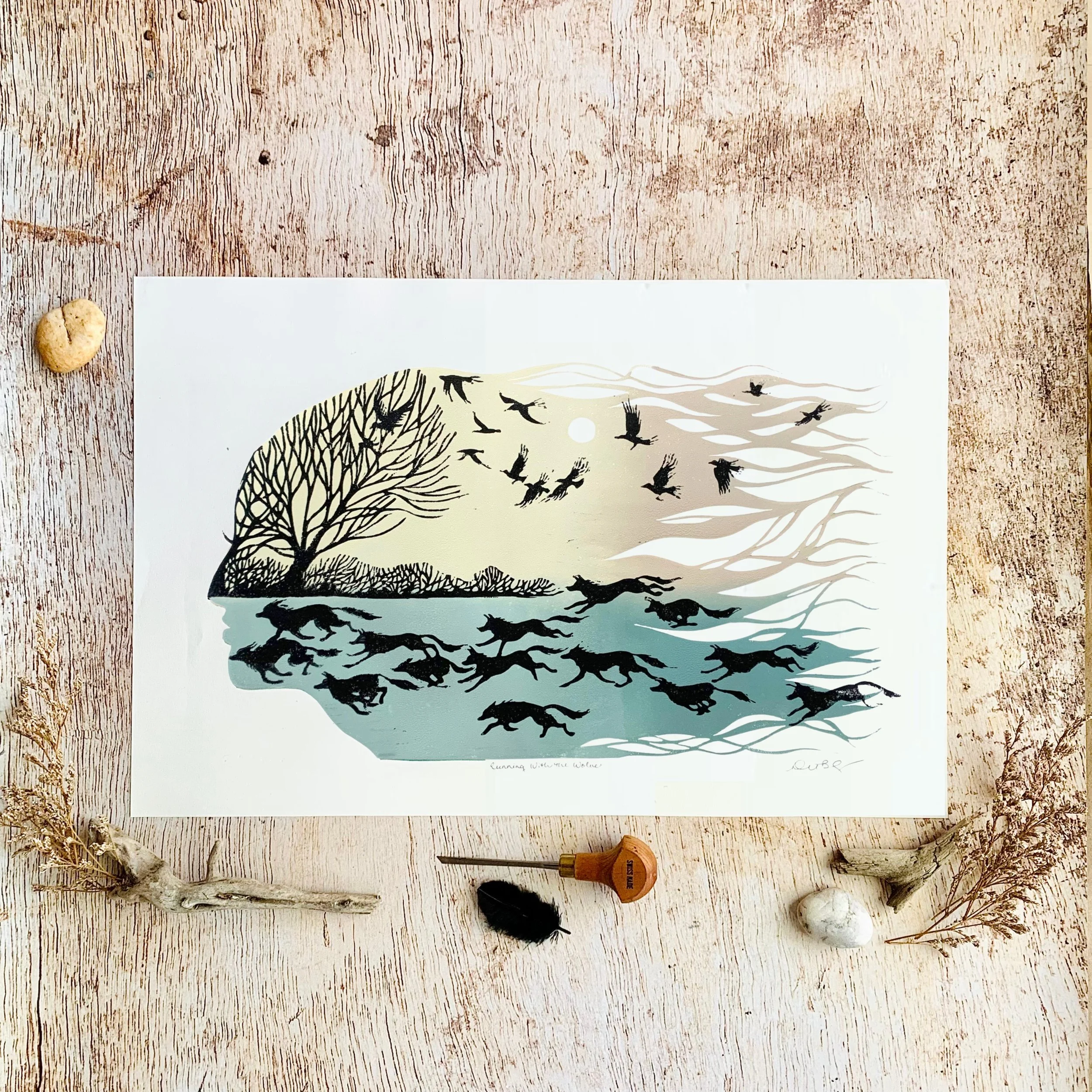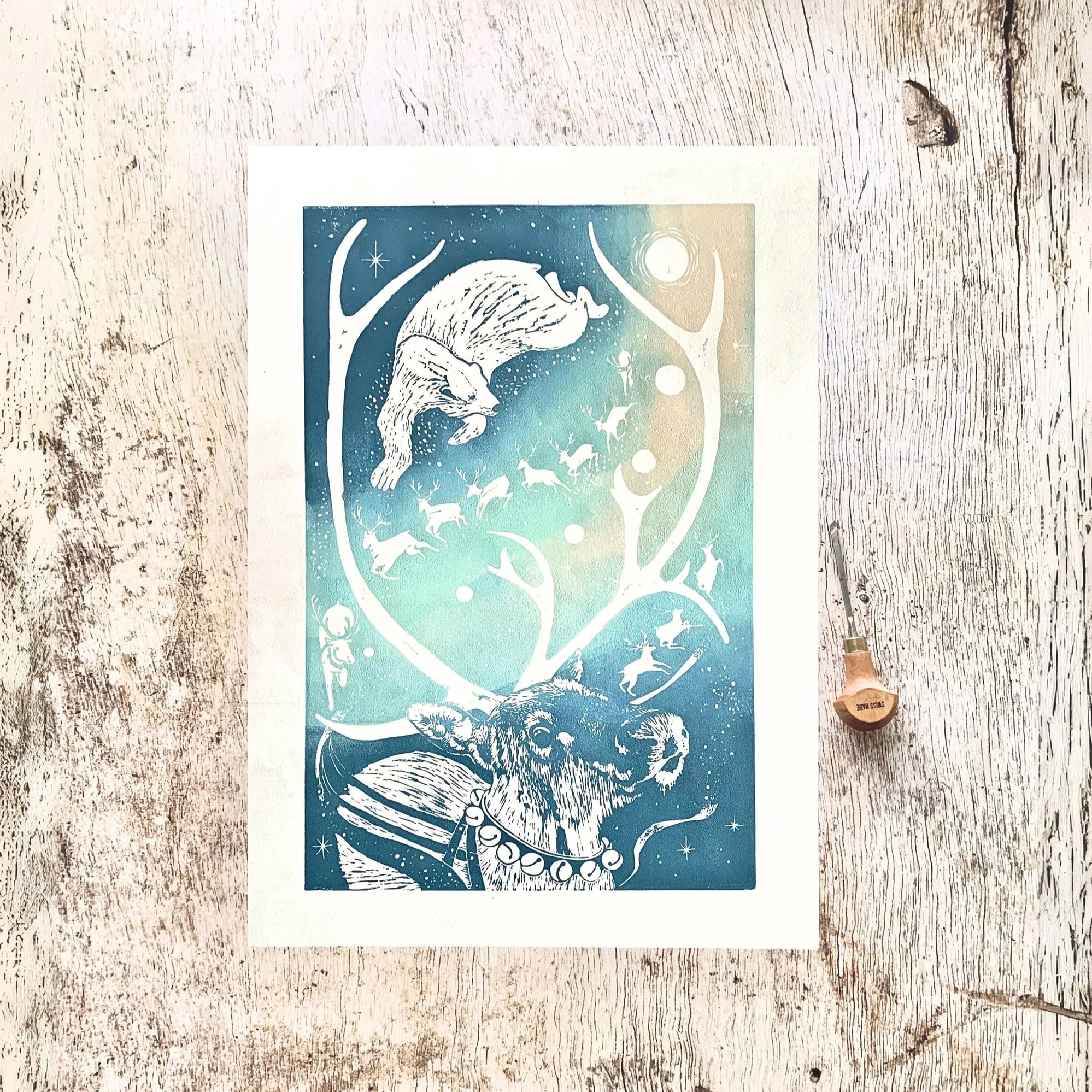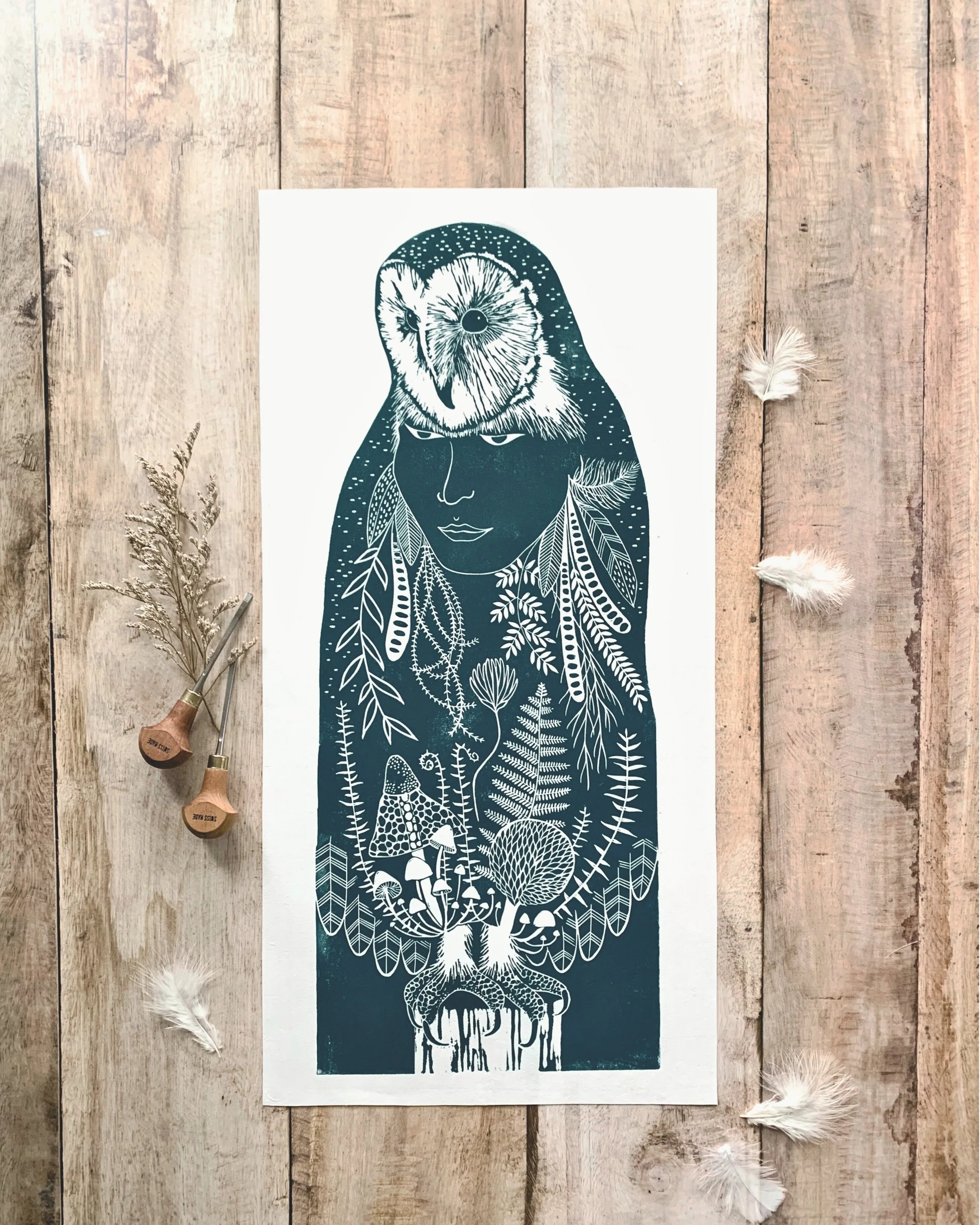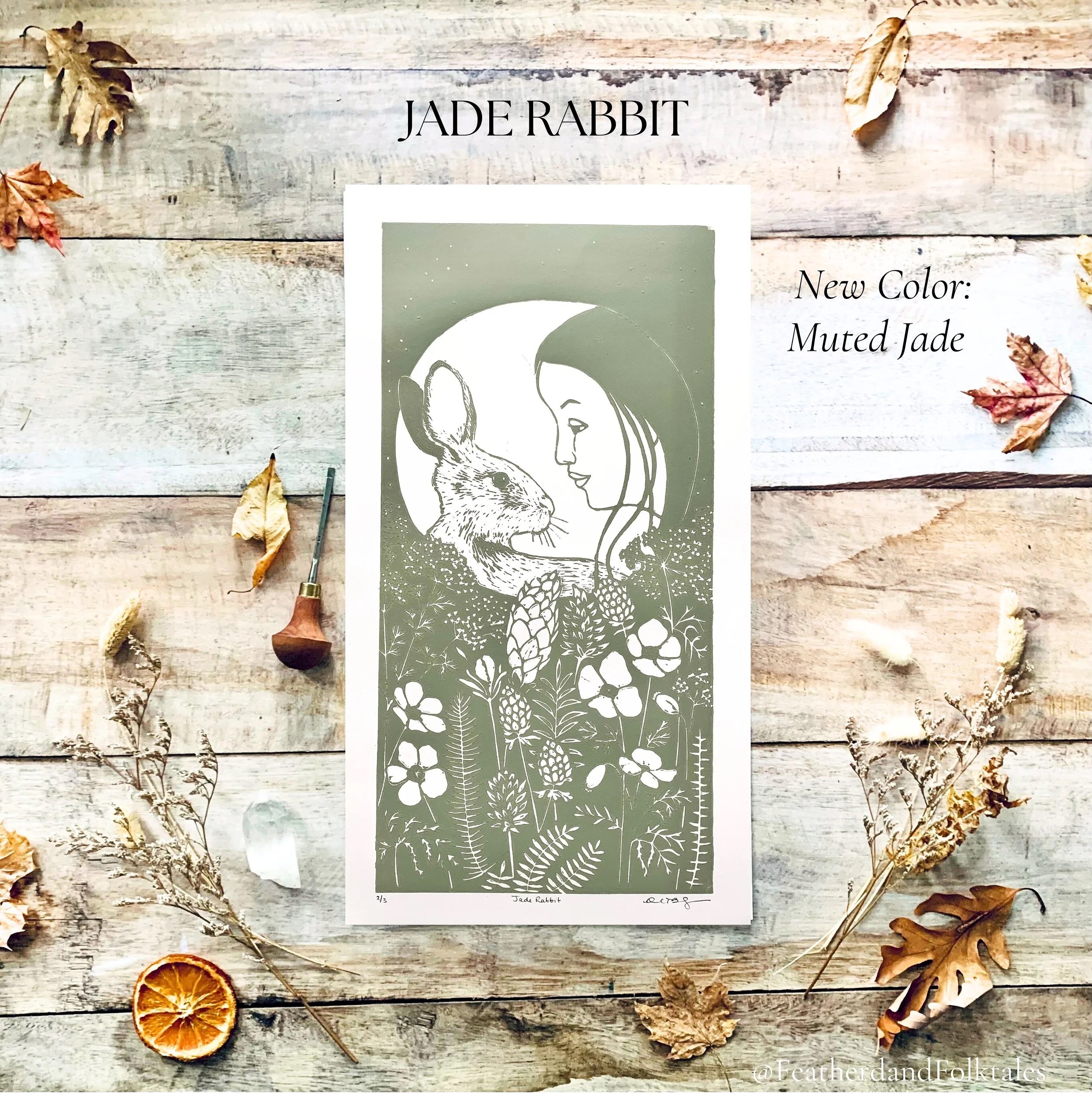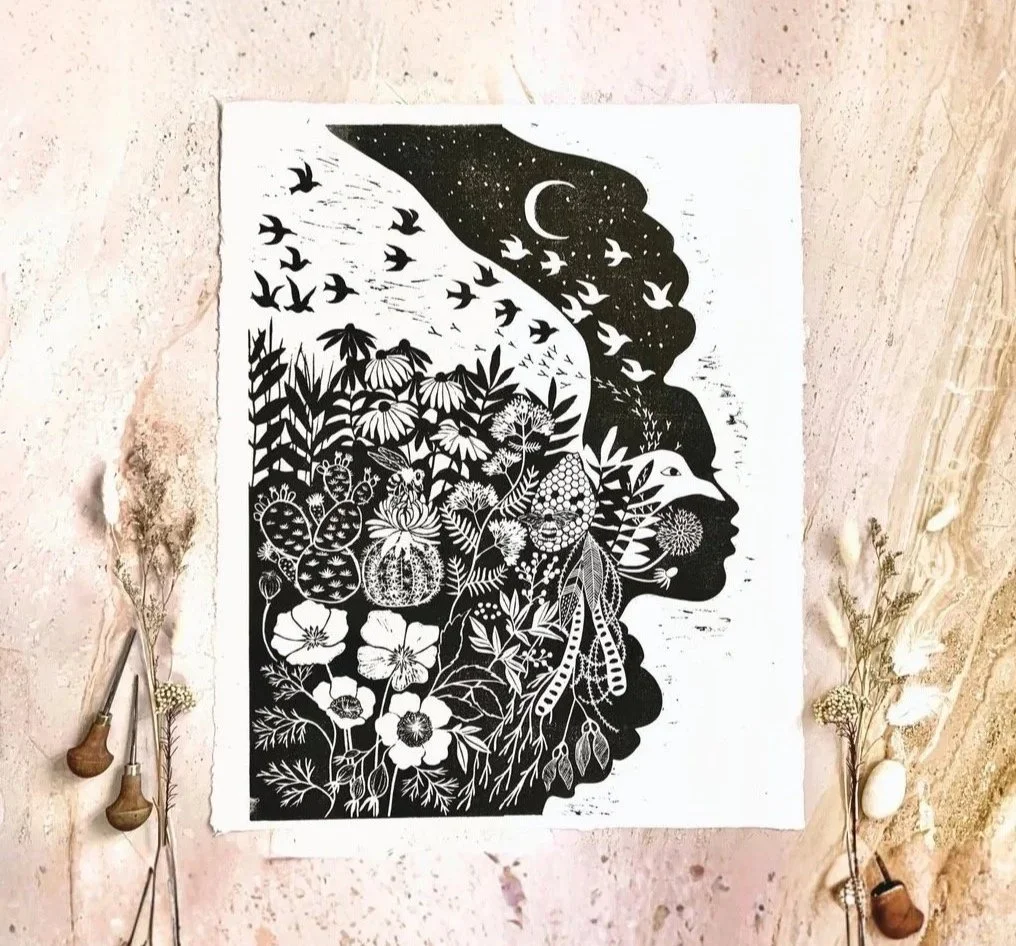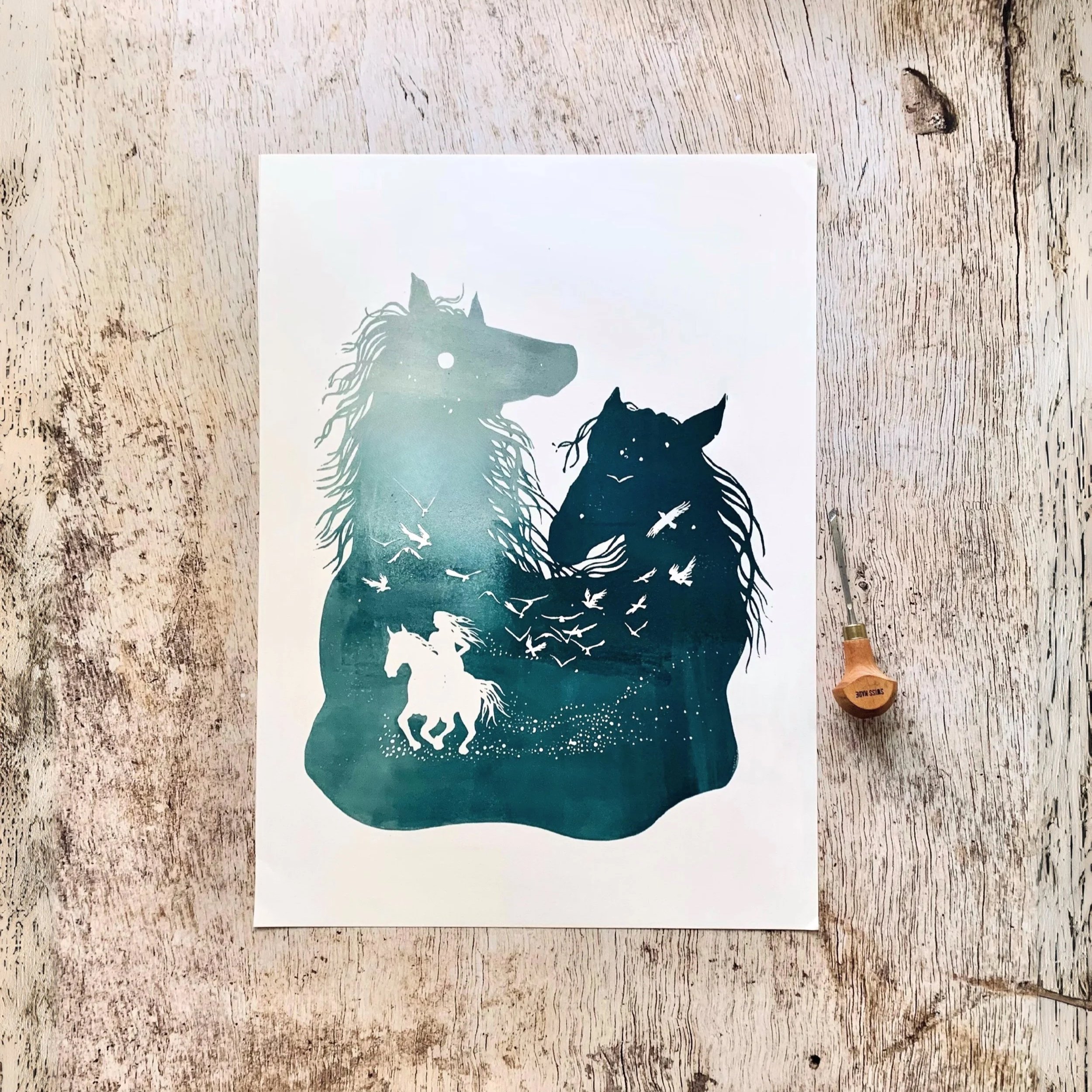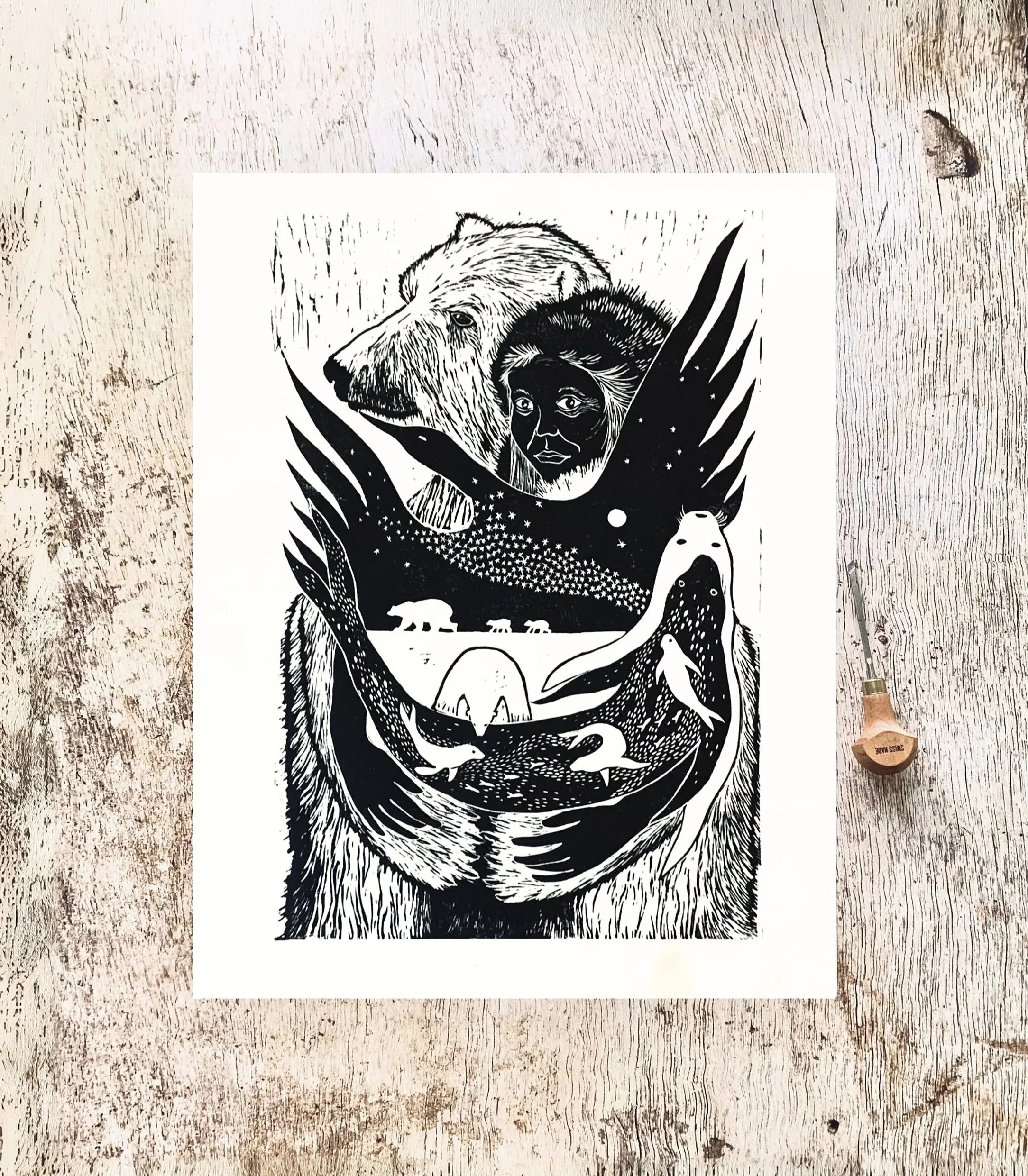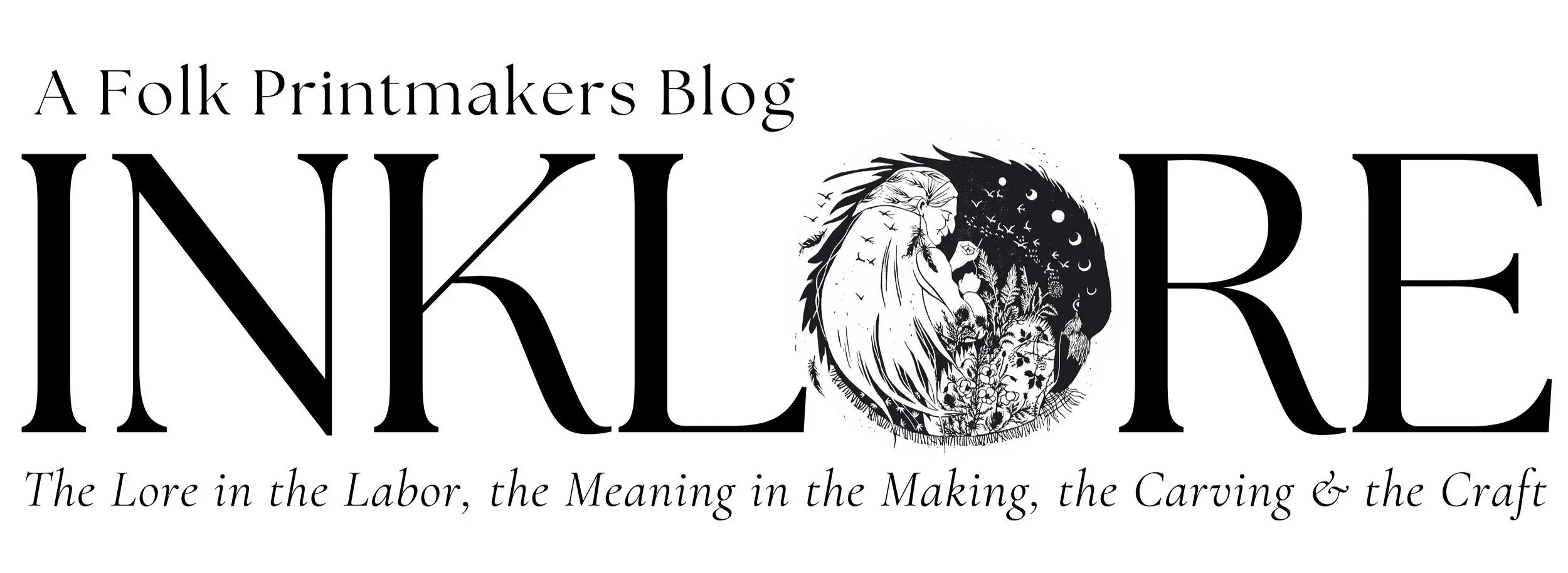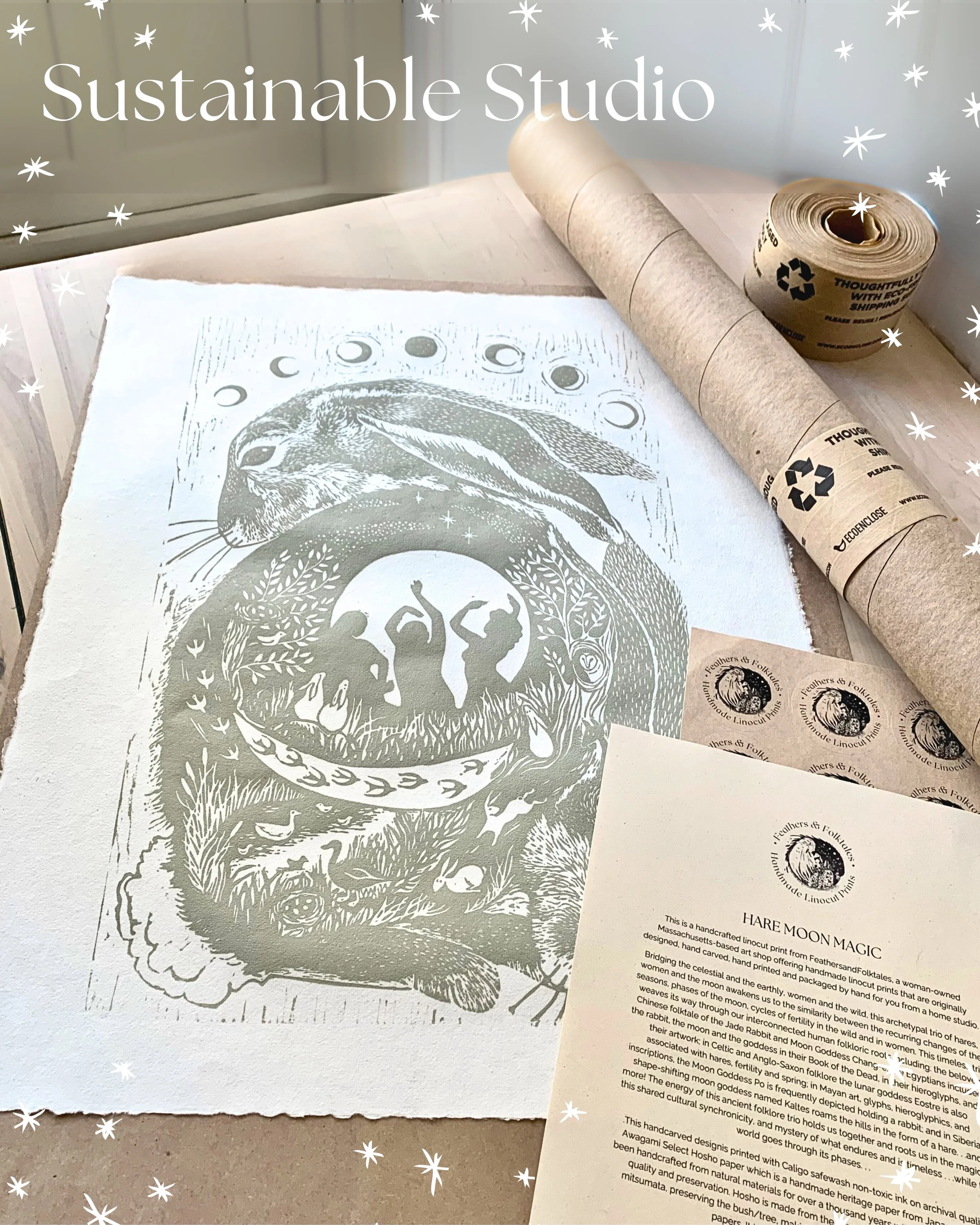Folktale linocut printS
Feathers & Folktales is the website of Diem Dangers, printmaker & story keeper offering beautifully handcrafted linocut prints inspired by folktales of women and the wild. Celebrating goddesses, earth keepers, medicine makers, priestesses, dream weavers, wild witches, maidens, mothers and crones. Each piece is a timeless reminder of the power of the wild feminine, and our enduring sisterhood with the wild. Carved and printed with sustainable practices including non-toxic inks, thoughtfully chosen papers, and earth-kind packaging—because stories worth keeping deserve to be made with care.
What is Linocut Art?
Printmaker hand carving, inking and hand printing a folklore inspired print representing the wild feminine and sisterhood with nature.
A linocut is a type of relief print, that preserves the ancient method of traditional hand carving and the age-old technique of handprinting. Once carved from wood, today artists often use linoleum—a softer, modern material—for its ease of carving. The linoleum is then rolled with ink, and paper is hand-pressed on top to reveal the final art print. The texture from the hand carving and variations in ink density from printing by hand gives the resulting artwork a rustic charm and timeless feel making linocut printmaking an ideal medium through which these age-old, heartwarming folktales and fairytales can be brought to life.
Diem Dangers is A Linocut Artist & Folklorist
I am a printmaker and storyteller with a passion for using the age-old technique of hand-carving and block printing to create original designs inspired by folk heroines who live in deep intimacy with nature — or who are creaturely themselves. Through both my art and blog reflections, I explore the mythic thread that connects women and the wild across cultures, a sisterhood of shared enchantment and kinship with the wild that spans cultures and continents. With each hand-pressed story, we begin to see an ancient hidden tapestry that weaves us back into belonging with one another and to the living world.
NEWESt prints
New prints carrying old magic, fresh from the carving block, rich with myth
Featured Folktale Blog posts
This original blog, also available on Substack, offers a deeper descent into the folklore that inspires each linocut — exploring their timeless themes, feminine archetypes, creaturely wisdom and ancestral memory. These stories remind us of our long-buried kinship with the wild and one another, stirring the memory of a sacred sisterhood beneath the weave of waking life.
The Selkie Sketch
Carry the Song of Selkie home to remind you of your wild and sacred pelt. This free printable pdf includes the original sketch of Selkie — the first whisper of a vision that later found its way into this handcarved linocut print.
printable
This sketch is a quiet homage to the soul’s work of remembering what is wild and whole — a small offering for your journal, scrapbook, or wall, to remind you of the tender journey back to your ocean-home. Please note, this piece is shared for personal use and private enjoyment only — not for reproduction, resale, or commercial use.
This new blog explores the sacred craft and cultural history of block printing as a living art rooted in storytelling, ritual, and resilience. I follow the lore in the labor, the meaning in the making, and the cross-cultural traditions behind the carving and the craft. From ancient woodblocks to modern presses, each post traces how story and printwork carry wisdom, spark reflection, and offer quiet resistance in a divided world. Join me on a mythic journey through ink and image, where tradition and imagination meet on the printed page.
Reviews
Handcrafted magic, deeply loved and beautifully received
Printed with non-toxic inks on handmade paper made of natural materials, packaged in recycled materials.


